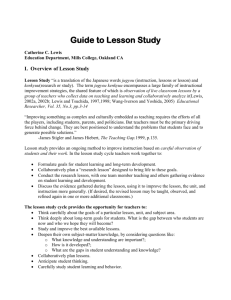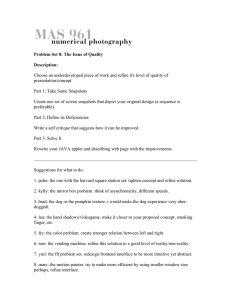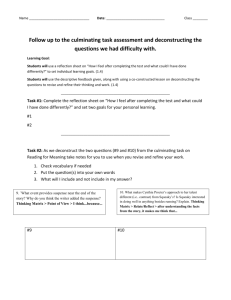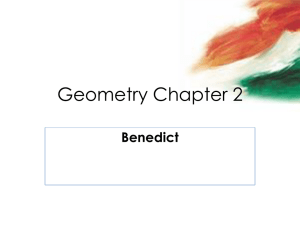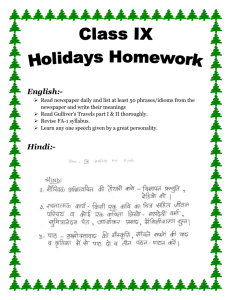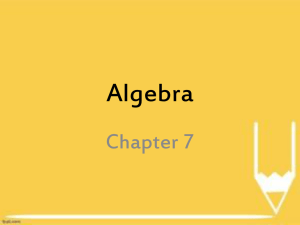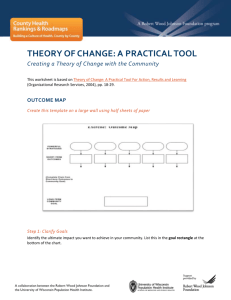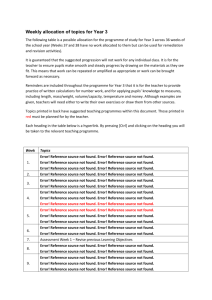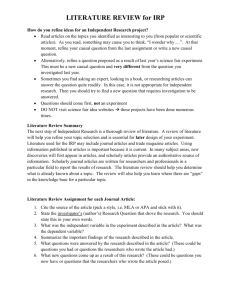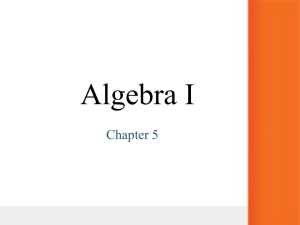A streamlined Lesson Study outline
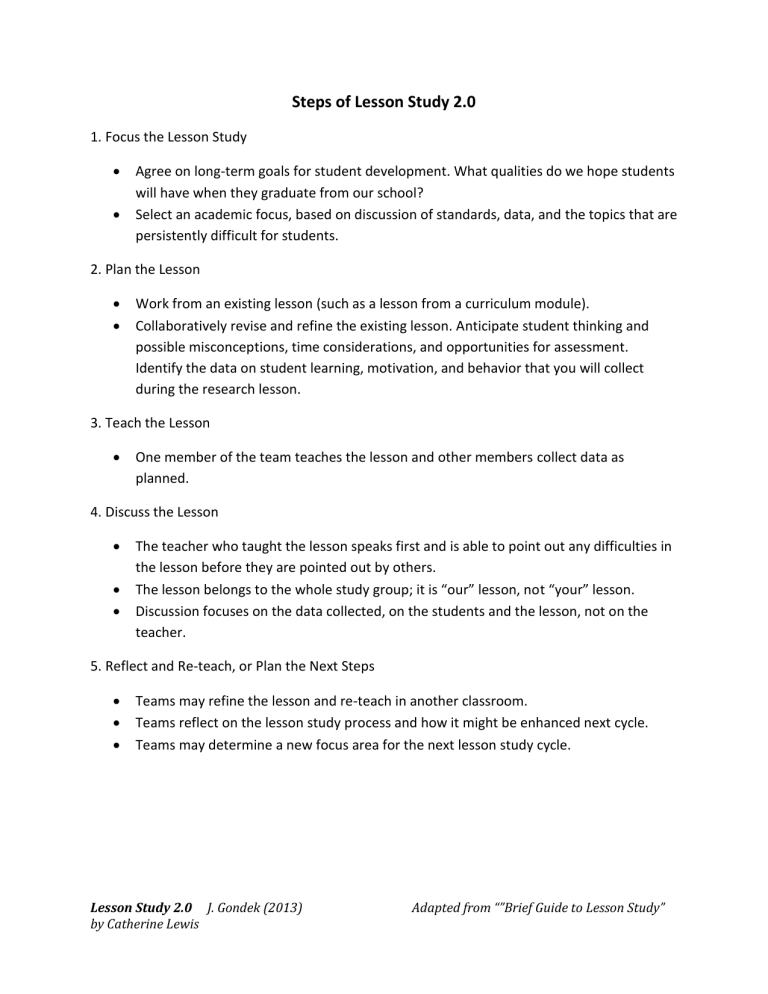
Steps of Lesson Study 2.0
1. Focus the Lesson Study
Agree on long-term goals for student development. What qualities do we hope students will have when they graduate from our school?
Select an academic focus, based on discussion of standards, data, and the topics that are persistently difficult for students.
2. Plan the Lesson
Work from an existing lesson (such as a lesson from a curriculum module).
Collaboratively revise and refine the existing lesson. Anticipate student thinking and possible misconceptions, time considerations, and opportunities for assessment.
Identify the data on student learning, motivation, and behavior that you will collect during the research lesson.
3. Teach the Lesson
One member of the team teaches the lesson and other members collect data as planned.
4. Discuss the Lesson
The teacher who taught the lesson speaks first and is able to point out any difficulties in the lesson before they are pointed out by others.
The lesson belongs to the whole study group; it is “our” lesson, not “your” lesson.
Discussion focuses on the data collected, on the students and the lesson, not on the teacher.
5. Reflect and Re-teach, or Plan the Next Steps
Teams may refine the lesson and re-teach in another classroom.
Teams reflect on the lesson study process and how it might be enhanced next cycle.
Teams may determine a new focus area for the next lesson study cycle.
Lesson Study 2.0 J. Gondek (2013) Adapted from “”Brief Guide to Lesson Study” by Catherine Lewis
Planning Phase
Discuss long term goals for student development.
Observed Lesson
Choose content area and lesson. Focus on a particular standard & student learning target.
Plan or revise a lesson(s) that foster the long term goals and lesson goals.
Actual classroom lesson is taught; attending teachers study student thinking, learning, engagement, behavior, etc. Data is collected throughout the lesson.
Post-Lesson
Activities
Discuss the lesson. Focus on evidence of whether the students did or did not meet the learning target.
Discuss what challenges were faced in meeting the learning target.
Refine and re-teach the lesson if desired. Or select a new focus for lesson study.
Lesson Study 2.0 J. Gondek (2013) Adapted from “”Brief Guide to Lesson Study” by Catherine Lewis

